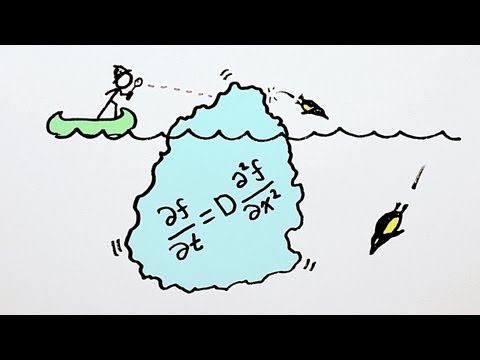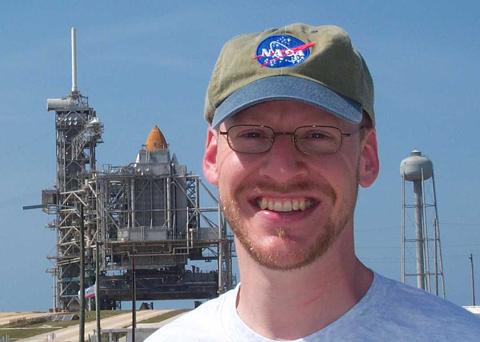National Science Week: Memes, blogs and videos: how social media has transformed the way we communicate science

On Friday night I was lucky enough to be able to attend National Science Week’s Event ‘Memes, blogs and videos: how social media has transformed the way we communicate science‘ in Canberra. The event was a panel discussion between some of the most prominent and influential social media science communicators around the globe. The panel included:
Phil Plait – (AKA @BadAstronomer) an astronomer, writer and popular science blogger, Elise Andrew – Creator of I Fucking Love Science on Facebook; Henry Reich – Creator of MinutePhysics and MinuteEarth YouTube channels; Mitchell Moffit & Gregory Brown – Creators of AsapSCIENCE YouTube channel; Destin Sandlin – Creater of SmarterEveryDay YouTube channel; and Chris Cassella – Managing Director of Science Alert.
It really was a stellar ‘cast’ who have a combined social media reach of well over 100 million people per week. So what did these ‘giants’ of social media have to say about science communication? Well they said a lot, so I can only cover the highlights here. For a start – they all agreed – anyone can be a ‘science communicator’. You don’t have to be a scientist, or journalist or writer to be an effective science communicator, you just need to have a passion for science, and the time and ability to pass that information onto others. So what do the panel members think makes their science communication successful, and what can they suggest to someone interested in science communication?
Let’s start with Phil Plait, astronomer, author and science blogger who thinks that ‘all science is entertaining’! Phil selects topics for his blog based on what he’s excited by, not so much on what he thinks others want to see. Phil explained that his philosophy is that if he’s excited about it, other people will be excited about it. He recognises that people are often interested in the scary stuff, so he wrote ‘Death from the Skies’, where he talks about all the stuff that could kill us; blackholes, magnetic flares, supernovas, and killer asteroids. He recommends putting your own spin on a topic, if every one else is talking about it, you need differentiate yourself from everyone else.

In contrast to Phil, Elise Andrews, creator of the enormously popular I Fucking Love Science Facebook page, really didn’t start off with an idea of ‘doing’ social media. Elise manages a page with 6.4 million followers on her own, and admits that the task takes up all of her time. Elise’s tip is to use the Facebook scheduling function, which helps dramatically with maintaining content in a global 24 hour information cycle. She stressed that the viral nature of social media means that it’s one of the few ways we have to get the message of science and science communication in front of people who wouldn’t normally seek out science-related material. When asked about the contentious name of her page, Elise responded ‘the name of your page is important, you need a name you can’t not look at!’
Minute Physics creator Henry Reich has a background in physics, so that’s why he focuses on physics – he understands it and he wants others to understand it. Henry believes that traditional teaching of physics/science is classical and boring to most people, which is a shame, because right now current physics is focused on really cool stuff like the big bang, string theory, quantum theory, etc. When deciding on a topic Henry tries to focus on the cool stuff, he then tries to explain it in a way that is simple and fun – but remains true to the science. Minute Physics videos are restricted to a minute or two – that makes Henry focus on what is important and condenses the message – there’s no room for extraneous material or ‘fluff’, and that keeps the attention of the viewer.

AsapSCIENCE creators Mitchell and Gregory, who also have a YouTube channel agree that the traditional way of teaching science can be seen as boring and dry. They believe the message in traditional classroom learning is ‘goal focused’ rather than focusing on the details of the science. So when they pick a topic, they ask a question like ‘Why do we age?’ rather than starting with detailed descriptions of cell division and DNA replication, etc.. This makes the message more relatable, rather than what often happens in a classroom setting with it being very dry and overwhelming. Incorporating entertainment is a vital part of effectively communicating the message – it helps to overcome the reputation of science as being dry and boring, and overly serious.
The third member of the panel that has his own YouTube channel is Destin Sandlin, creator of Smarter Every Day. Although Destin has an engineering background – B.Sc. in Mechanical Engineering, M.Sc. in Aeronautical Engineering – he takes the approach that he’s just an average guy who is trying to figure something out that he doesn’t know. This allows him to take his viewers on a journey from unknowing to discovery to knowing. In crafting his videos he looks for the “Aha!” moment – the point at which you go from not-knowing to knowing how something works or what caused it to happen. Destin’s videos are progressive – each one starts off with simple concepts, gets progressively harder, until it spikes with a serious point, before it reaches its conclusion. He believes that each video needs to cater for all levels of viewer and should have something interesting for everyone.
Lastly, Science Alert Managing Director Chris Cassella, says that Science Alert started as a website promoting Australian science, since Australian scientific accomplishments are under-represented in the media and community awareness. Chris started to use Facebook to drive traffic to the website, although things didn’t quite work out that way. The Facebook page didn’t drive much traffic to the website, but there was fantastic engagement on Facebook – he then realised that Facebook itself was a better delivery medium. He recommends that sites mix up the serious science content with humorous memes, jokes, etc which breaks up the stream and helps keep people engaged.
During the Q&A session at the end of the panel, an audience member asked the panel for their advice to scientists on what they can do to help assist science popularisers to get the message out about new research. The immediate and very strong message from all panelists was, “publish your results in open access journals!” So often, they would love to link to new research, but linking to a paywalled paper or article creates a deluge of complaints from their audience – so they can’t do it.
So there’s a lot of information to take away from this group of committed science enthusiasts and communicators, but here’s a few tips:
– Be passionate about the science you love, whether it’s biology, physics, astronomy or chemistry – if you’re passionate about it, your enthusiasm will be passed on to your listeners/viewers.
– The advent of social media and platforms like Facebook, Twitter and YouTube means that you no longer need to have a lot of money or resources to be an effective science communicator, you can start with a laptop and internet connection and you’re on your way.
– You don’t need top notch equipment, ‘Hollywood’ style special effects or eye-wateringly expensive graphics to produce your own YouTube videos.
– Make sure you get your science facts right, but if you make a mistake, correct it, be transparent about it, and move on.
If you’d like to see more of the panelists check out these links for further tour dates during National Science Week: Phil Plait, IFLS Live, and National Science Week.
Harnett S (2013-08-12 07:42:54). National Science Week: Memes, blogs and videos: how social media has transformed the way we communicate science. Australian Science. Retrieved: Jul 08, 2025, from http://ozscience.com/news/national-science-week-memes-blogs-and-videos-how-social-media-has-transformed-the-way-we-communicate-science/
 Follow
Follow